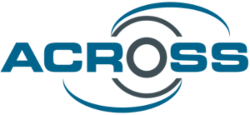The envisioned technical architecture of the ACROSS platform is structure in a series of layers offering functionalities required to enable the approach previously introduced; among them, it is possible to identify 8 layers, each of them playing a specific role.
Connectors
Will provide functionalities to connect and access public/private services offered by both the Public Administration and third parties and to get data from heterogeneous sources such as repositories, existing systems (e.g. owned by PA), etc. that could expose different interfaces; to this aim, this layer will offer a set of software components ready to be used or tailored according to specific needs and requirements to allow the connection of data sources and public/third-party private services to ACROSS Platform. To this aim, the ACROSS Platform will leverage “Micro Proxies” one of the outcomes of CLIPS project (CIP 2007-2013), a customisable technological element to interact with legacy systems and based on a common set of specifications, allowing the implementation of new ones, to deal with interoperability aspects.
Harmonisation
Will take care of the harmonisation of data coming from connected data sources and third-party services enabling semantic interoperability and according to data models defined during the project based on European standards such as Core Public Service Vocabulary, Core Person Vocabulary and DCAT for metadata. It will leverage the functionalities offered by the Data Mashup Editor (DME), a tool offering capabilities for data harmonisation that will be extended and verticalized on the public services domain.
Citizen data sovereignty and usage control
Will provide functionalities to ensure citizens’ data ownership, enhancing privacy and transparency and allowing citizens to control and manage how personal data can be accessed by the public and private sector, in compliance with GDPR. This layer will also act as a gateway, by mapping request of access to personal data to the appropriate public/private service when access to such data is granted; this approach will ensure privacy and GDPR compliance in the realization of My Folder concept. To provide functionalities related to data ownership, this layer will leverage on a consent-based and user-centric platform for managing the ownership of personal data in compliance with GDPR. extending MyData Architecture Framework and ISA2 Common Public Service Vocabulary Application Profile (CPSV-AP) for a service description to guarantee a degree of cross-domain and cross-border semantic interoperability.
APIs
Will expose a set of Open APIs defined during the project that will allow uniformly to access and make use of both functionalities offered by the ACROSS Platform and data/services coming from connected data sources and public/third-party private services, despite their heterogeneity. Those Open APIs will allow accessing services uniformly connected through the Connectors and enable the implementation of the application of the upper layer (Application layer) such as innovative public services, allowing their replicability. To increase interoperability and replicability opportunities, Open APIs will be based on recognised standards, such as ETSI NGSI-LD specifications, verticalized on the public services domain.
Services provided that have been designed using the User Journey methodology
These are the digital public services offered thanks to the innovative application of User Journeys in service delivery.
Application
will provide the high-level applications based on the capabilities offered by the whole ACROSS Platform and used by the citizens to access the User Journey Services; these belongs to three groups:
- Virtual Assistant: this AI application will provide multi-lingual textual virtual assistant chat and speech interfaces guiding the citizens along the User Journey and through the involved public services. It will rely on the User Journey models created in the above-mentioned tool. The multi-linguality will be provided using the eTranslation service of the EC, which is one of the CEF building blocks14. The consortium has already successful experience of using this service in several H2020 projects and by implementing the European Data Portal15
- Mobile/Web Application: the mobile and the web application will represent two of the three points of access to the User Journey Services for the citizens; both will provide a user-friendly environment to interact with the User Journey Services offering all the needed information for the complete, easy and fruitful access to them. In order to make the applications available in as many channels as possible, both a native Android and a native iOS application will be implemented. They will integrate the Virtual Assistant and all customer-facing tools, allowing the users to enjoy the full functionality of ACROSS through a single point of service. All applications (Android, iOS, Web) will employ the most current best practices of the underlying platform to provide a secure, accessible and enjoyable user experience.
Security
This layer is vertical and transversal to the others of the ACROSS Platform and will deal with security aspects; since different stakeholders will interact through the functionalities offered by the platform, security is an important aspect to be addressed. For this reason, the ACROSS Platform will include authentication and authorization mechanisms based on predefined roles and access control to guarantee the adequate security levels. To this aim, the Security layer will leverage consolidated solutions such as FIWARE’s Generic Enablers Keyrock (a tool for identity management that supports OAuth2-based authentication) and Wilma (a tool providing proxy functionalities within OAuth2-based authentication schemas).
ACROSS Platform is complemented by the User Journey Methodology and its supporting Modelling Tool, which is an application to enable the design and implementation of the user journey services combining the involved public/private services. This tool will offer technical functionalities to combine public/private services connected to ACROSS Platform and its main user is an IT Expert; under the guidance of the co-creation and co-delivery sessions (in which citizens, Public Administrations and private third parties participate) the IT Expert realises the User Journey Service.
